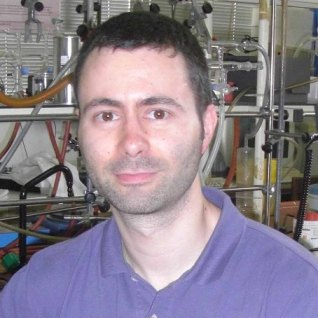Heterometallic Complexes
A special issue of Inorganics (ISSN 2304-6740). This special issue belongs to the section "Coordination Chemistry".
Deadline for manuscript submissions: closed (15 December 2022) | Viewed by 10435
Special Issue Editors
Interests: organometallic chemistry; transition metal carbonyls; metal–metal bonding; P-ligands; DFT calculations
2. "C. D. Nenitzescu" Institute of Organic and Supramolecular Chemistry of the Romanian Academy, Splaiul Independentei 202 B, Bucharest, Romania
Interests: molecular magnetism; crystal engineering; metallosupramolecular chemistry; homo- and hetero-polynuclear complexes
Special Issues, Collections and Topics in MDPI journals
Special Issue Information
Dear Colleagues,
The synthesis and chemical study of polymetallic compounds has been a relevant topic in different areas of Inorganic and Organometallic Chemistry over the past decades, mainly as consequence of their potential application in homo- and heterogeneous catalysis, but also for the novel electronic or magnetic properties that these compounds can display. Polynuclear complexes containing two or more different paramagnetic ions are of high interest in molecular magnetism. Numerous Single Molecule Magnets (SMMs) and Single Chain Magnets (SCMs), and most of the 3D molecule-based magnets are heterometallic complexes. Of particular interest are the Metal–Organic Frameworks (MOFs) constructed from different metallic nodes. Various applications for MOFs have been envisioned: separation and storage of specific molecules, catalysis, multifunctional materials, etc. The close proximity of the metals in these systems lies at the heart of their enhanced properties, as it allows the metals to act through cooperative and synergistic pathways that are impossible for related mononuclear complexes. Typically, the approximation of the metals is achieved by the presence of direct metal-metal bonds or by using suitable bridging ligands, which can also provide additional stability to the system. In search of new properties and/or better catalytic activities, a natural extension of these works that gained tremendous interest recently is the preparation of heterometallic complexes bearing different metal atoms. There are several appealing reasons for the renewed interest in this area. Firstly, in nature, several natural enzymes are based on electron transfer steps taking place at different metal atoms held together by the enzyme backbone, and this has prompted interest in preparing molecular mimics capable of accomplishing similar processes. Secondly, the different electronic and coordinative preferences of two different metals can give rise to chemical properties and reactivity departing significantly from those of each isolated fragment. Thirdly, there is a fundamental interest in the study of new M-M′ bonding interactions, especially for multiply bonded systems. Finally, tandem processes might also benefit from the combined presence of two different metals in a complex, with each metal completing specifically one elementary transformation as part of a more complex process.
This Special Issue of Inorganics, entitled “Heterometallic Complexes”, will deal with the new synthetic methods developed for the preparation of heterometallic complexes, but also with aspects such as the collection of new structural information, the analysis of their electronic structure, and the bonding or the development of novel applications in catalysis and beyond.
Prof. Dr. Daniel García‐Vivó
Prof. Dr. Marius Andruh
Guest Editors
Manuscript Submission Information
Manuscripts should be submitted online at www.mdpi.com by registering and logging in to this website. Once you are registered, click here to go to the submission form. Manuscripts can be submitted until the deadline. All submissions that pass pre-check are peer-reviewed. Accepted papers will be published continuously in the journal (as soon as accepted) and will be listed together on the special issue website. Research articles, review articles as well as short communications are invited. For planned papers, a title and short abstract (about 100 words) can be sent to the Editorial Office for announcement on this website.
Submitted manuscripts should not have been published previously, nor be under consideration for publication elsewhere (except conference proceedings papers). All manuscripts are thoroughly refereed through a single-blind peer-review process. A guide for authors and other relevant information for submission of manuscripts is available on the Instructions for Authors page. Inorganics is an international peer-reviewed open access monthly journal published by MDPI.
Please visit the Instructions for Authors page before submitting a manuscript. The Article Processing Charge (APC) for publication in this open access journal is 2700 CHF (Swiss Francs). Submitted papers should be well formatted and use good English. Authors may use MDPI's English editing service prior to publication or during author revisions.
Keywords
- heterometallic compounds
- polynuclear compounds
- metal–metal bonding
- small molecule activation
- electronic structure
- molecular magnetism
- tandem catalysis
Benefits of Publishing in a Special Issue
- Ease of navigation: Grouping papers by topic helps scholars navigate broad scope journals more efficiently.
- Greater discoverability: Special Issues support the reach and impact of scientific research. Articles in Special Issues are more discoverable and cited more frequently.
- Expansion of research network: Special Issues facilitate connections among authors, fostering scientific collaborations.
- External promotion: Articles in Special Issues are often promoted through the journal's social media, increasing their visibility.
- e-Book format: Special Issues with more than 10 articles can be published as dedicated e-books, ensuring wide and rapid dissemination.
Further information on MDPI's Special Issue polices can be found here.






